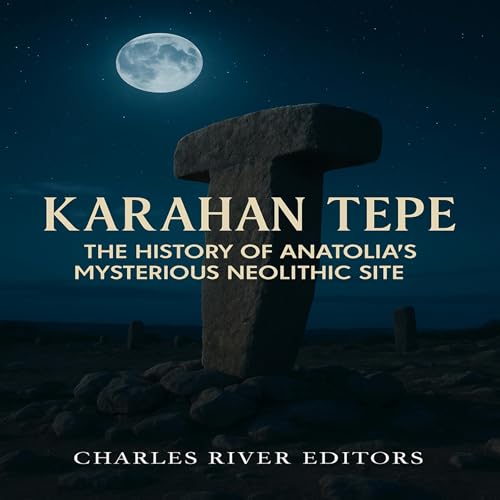
Karahan Tepe
The History of Anatolia’s Mysterious Neolithic Site
Falha ao colocar no Carrinho.
Falha ao adicionar à Lista de Desejos.
Falha ao remover da Lista de Desejos
Falha ao adicionar à Biblioteca
Falha ao seguir podcast
Falha ao parar de seguir podcast
Assine e ganhe 30% de desconto neste título
Compre agora por R$ 17,99
-
Narrado por:
-
KC Wayman
Sobre este título
When one thinks of the world’s first cities, Sumer, Memphis, and Babylon are some of the first to come to mind, or if the focus then shifts to India, then Harappa and Mohenjo-daro will likely come up. But archaeologists recently uncovered a site thousands of years older than any of those, marking one of the oldest settled sites in the world.
One of the earliest species of the genus Homo to be discovered thus far is Homo habilis, which basically means “handy man.” The name came from the belief at the time of its discovery that this species was the first to start using stone tools, since the first fossils to be uncovered in Olduvai Gorge were from the same stratigraphic layer as simple stone tools. Fossils of the crania and postcranial skeleton for this species have been found in both eastern and southern Africa and date to as far back as 2.
5 million years ago. While other Homo species would be able to use stone tools and harness fire over time as well, the Bronze Age, marking the transition to new kinds of tools, would not come until very recently (relatively speaking).
The Neolithic period came before the Bronze Age and is generally regarded as the final subdivision of the Stone Age. During this time, communities domesticated plants and certain animals but still relied on hunting and gathering to a considerable extent, and beginning sometime around 7000 BCE, handmade pottery was developed, along with more advanced stone axes that enabled people to clear vast forests. Thanks to tools like that, the sizes of these Neolithic communities ranged from thousands to as few as a hundred, and they spread across the world with a variety of cultures and languages. One aspect these cultures had in common was that they relied on similar tools made of stone, wood, and bone.



